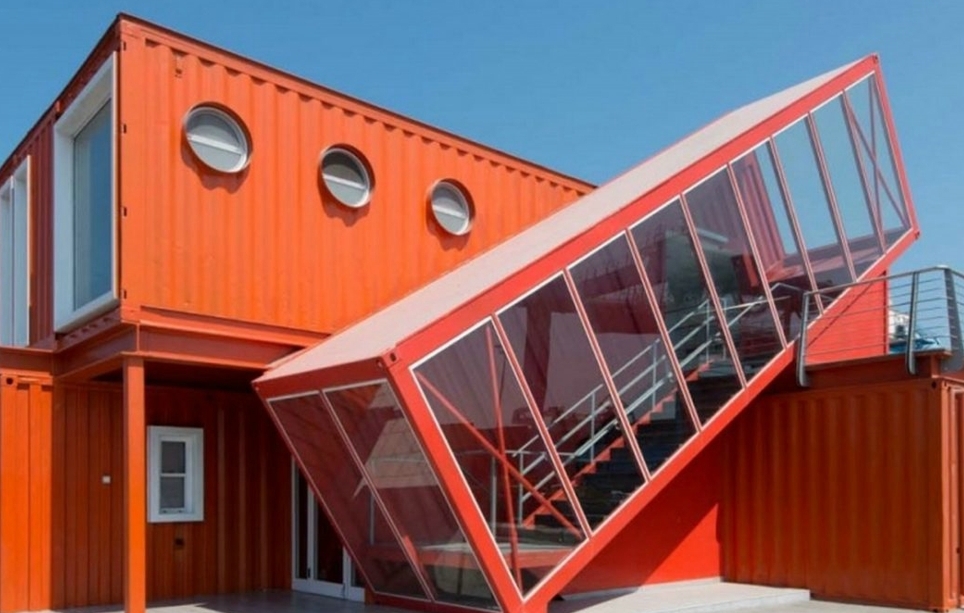How Durable Are Modular Container Homes in Harsh Climates? Experts Weigh In
Durability Analysis of Modular Container Houses in Harsh Climate
The durability of modular container housing in harsh climate depends on the material process, structural design and regular maintenance. Through professional reinforcement and adaptive remodeling, its wind resistance, earthquake resistance and corrosion resistance can reach or even exceed the traditional building standards. However, it should be noted that the maintenance cost and time investment in extreme environments are high, and need to be combined with a comprehensive assessment of the long-term use of demand.
i. Material and Structural Design
Main Material
Corrosion-resistant steel (e.g. galvanized steel) is used as the frame, together with antirust paint, epoxy coating and other treatments, which can effectively resist corrosive environments such as humidity and salt spray.
The surface of the box is enhanced by sandblasting and rust removal, and multi-layer anti-corrosion coating process to enhance the protection, and the service life in coastal areas can be extended to more than 20 years.
Structural Strengthening Measures
The modularized design enhances the overall stability through welding reinforcement and internal support structure, which can resist grade 12 typhoon and 9 degree earthquake.
Multi-storey buildings require additional lateral connecting elements (e.g. shear walls) and foundation reinforcement to prevent overturning due to strong winds or earthquakes.
ii. Performance under different climate types
Typhoon and strong wind environment
The steel frame with wind resistant anchoring system (e.g. ground bolts) can withstand extreme weather with wind speed up to 120km/h.
Sealant and waterproof strips are used at the box joints to reduce the risk of wind and rain penetration.
High humidity and salt spray environment
Regular inspection of weld seams and coatings is required in humid areas to avoid corrosion leading to a reduction in structural strength.
Saline areas need to use 316L stainless steel or aluminum-zinc-plated steel plate, salt spray corrosion resistance is increased by more than 50%.
Extreme cold and high temperature environment
Adding polyurethane foam layer (thickness ≥75mm) or rock wool sandwich panel, together with double-layer insulating glass, can realize the temperature control range of -30℃ to 50℃.
In high temperature areas, the roof can be coated with reflective coating to reduce the solar radiation heat absorption rate.
Earthquake-prone areas
The modular container disperses seismic energy through elastic connectors (e.g. rubber bearings) to reduce structural damage.
Lightweight partition walls are used inside the box to reduce the impact of seismic inertia force on the whole.

iii. Maintenance and Adaptive Upgrades
1. Regular Maintenance Requirements
The steel structure should be inspected annually for corrosion and aging of the sealant, and repaired in a timely manner.
It is recommended to re-coat the anti-corrosion coating every 2 years in extreme climate areas, and the maintenance cost is about 3%-5% of the total construction cost.
2. Upgradeability
Higher performance thermal insulation materials (e.g. vacuum insulation panels) can be replaced or solar shades can be added to improve environmental adaptability.
The modular expansion design supports the rapid addition of disaster-resistant features (e.g., wind braces, drainage systems).
3. Regular painting and coating maintenance
Regular spraying of antirust paint, epoxy resin and other anti-corrosion coatings can reduce rust and corrosion of steel due to humidity and salt spray, and the maintenance frequency in coastal areas needs to be increased to once every 2 years.
Galvanized steel frame with multi-layer anti-corrosion process (such as sandblasting and rust removal), can enhance the corrosion resistance of the material by more than 30%, extending the service life to more than 20 years.
4. Sealing maintenance
Check the aging condition of the sealant at the box joints, door and window gaps, and replace the broken waterproof strips in time to prevent the internal corrosion caused by rainwater infiltration.
5. Inspection and reinforcement of key parts
Inspect the welding points, load-bearing columns and foundation joints every year, and repair the cracked or deformed parts to prevent the overall strength from decreasing due to the loosening of the structure.
Multi-storey buildings need to focus on checking lateral connecting elements (e.g. shear walls) and anchoring systems to ensure that wind and seismic performance is up to standard.
6. Load management
Avoid overloading, prevent deformation of the box due to long-term uneven stress, and use lightweight materials for internal partition walls to reduce the structural burden.
7. Temperature and humidity control
Regularly clean the roof drainage system to prevent moisture from accumulating in the box; increase ventilation facilities (such as exhaust fans) in high humidity areas to reduce the risk of mold growth.
Extremely cold areas need to check the integrity of the insulation layer and repair broken polyurethane foam or rock wool sandwich panels in a timely manner to ensure thermal insulation performance.
8. Foundation Maintenance
Regularly check the ground level and the settlement of the concrete foundation, adjust the bracket or fill the foundation gap to prevent the box from tilting or deformation.
9. Utilities Maintenance
Check the aging condition of pre-buried pipelines every 3 years and replace metal pipes with PVC material to reduce the risk of leakage.
Upgrade solar power system or rainwater recycling device to enhance energy self-sufficiency and reduce environmental dependence.
10. Material Replacement and Optimization
Replace aging wall decorative materials (such as bamboo wood fiber board), ground anticorrosive wood, etc., and upgrade to high-performance environmentally friendly building materials.
iv. Comparison with Traditional Building
Wind resistance: Modular container house 12 degree typhoon (need to be reinforced); Conventional concrete building 10 degree typhoon (standard design)
Seismic performance: Modular Container House 9 degree earthquake (elastic connection design); Conventional concrete building 8 degree earthquake (conventional structure)
Extreme Temperature Adaptability: Modular Container House -30℃~50℃ (need to add insulation); Conventional Concrete Building -20℃~40℃ (natural insulation)
Maintenance Frequency: Modular Container House 1-2 years/time (high corrosion area); Conventional Concrete Building 5-10 years/time


